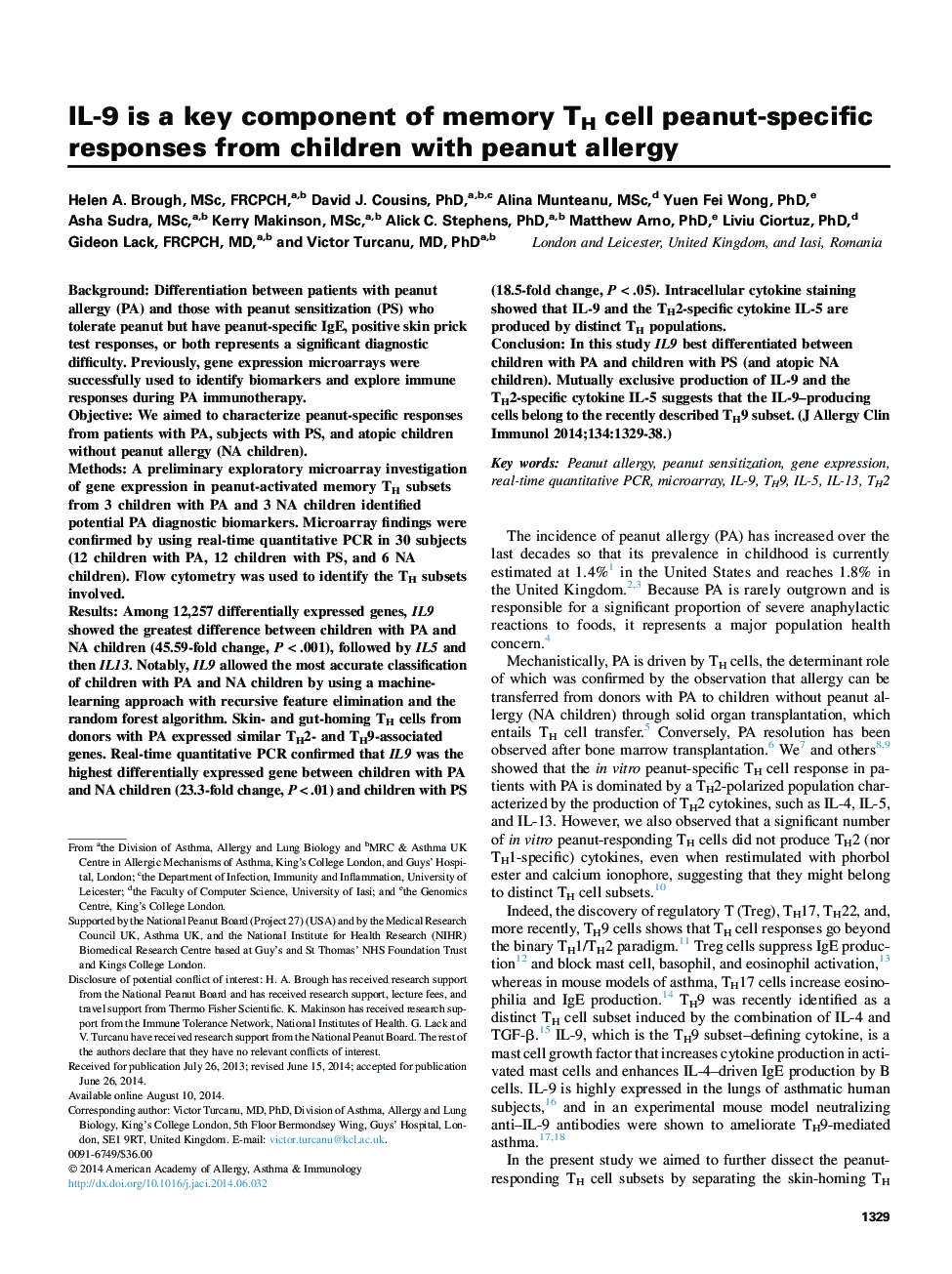| Article ID | Journal | Published Year | Pages | File Type |
|---|---|---|---|---|
| 6065829 | Journal of Allergy and Clinical Immunology | 2014 | 20 Pages |
BackgroundDifferentiation between patients with peanut allergy (PA) and those with peanut sensitization (PS) who tolerate peanut but have peanut-specific IgE, positive skin prick test responses, or both represents a significant diagnostic difficulty. Previously, gene expression microarrays were successfully used to identify biomarkers and explore immune responses during PA immunotherapy.ObjectiveWe aimed to characterize peanut-specific responses from patients with PA, subjects with PS, and atopic children without peanut allergy (NA children).MethodsA preliminary exploratory microarray investigation of gene expression in peanut-activated memory TH subsets from 3 children with PA and 3 NA children identified potential PA diagnostic biomarkers. Microarray findings were confirmed by using real-time quantitative PCR in 30 subjects (12 children with PA, 12 children with PS, and 6 NA children). Flow cytometry was used to identify the TH subsets involved.ResultsAmong 12,257 differentially expressed genes, IL9 showed the greatest difference between children with PA and NA children (45.59-fold change, PÂ < .001), followed by IL5 and then IL13. Notably, IL9 allowed the most accurate classification of children with PA and NA children by using a machine-learning approach with recursive feature elimination and the random forest algorithm. Skin- and gut-homing TH cells from donors with PA expressed similar TH2- and TH9-associated genes. Real-time quantitative PCR confirmed that IL9 was the highest differentially expressed gene between children with PA and NA children (23.3-fold change, PÂ < .01) and children with PS (18.5-fold change, PÂ < .05). Intracellular cytokine staining showed that IL-9 and the TH2-specific cytokine IL-5 are produced by distinct TH populations.ConclusionIn this study IL9 best differentiated between children with PA and children with PS (and atopic NA children). Mutually exclusive production of IL-9 and the TH2-specific cytokine IL-5 suggests that the IL-9-producing cells belong to the recently described TH9 subset.
